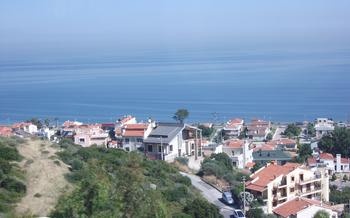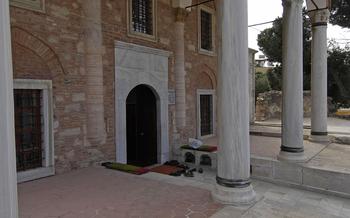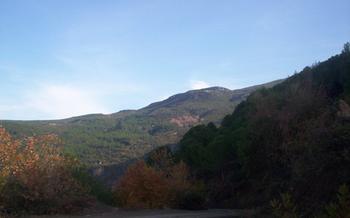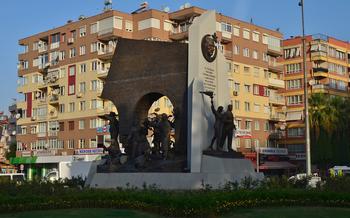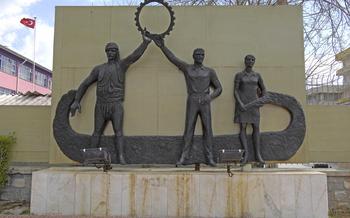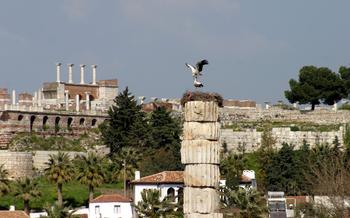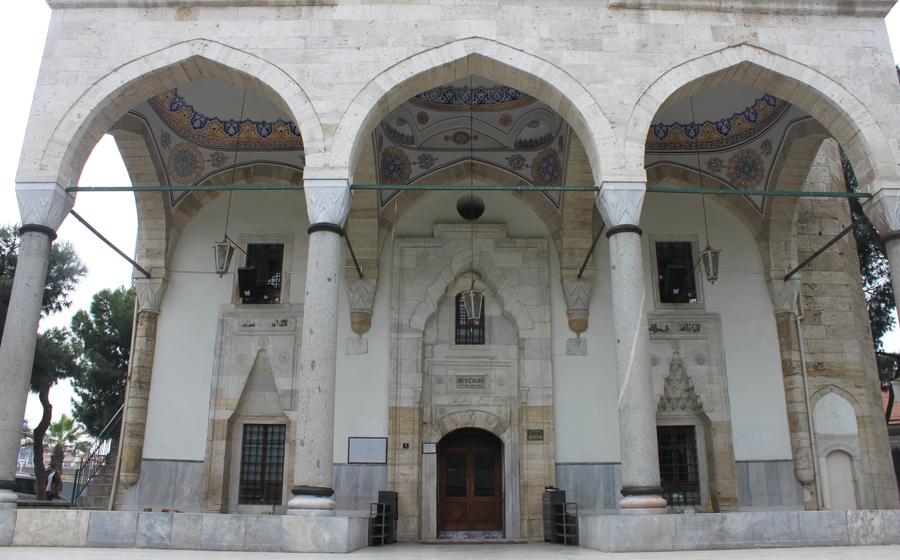
Didyma Ancient City
- Didyma Ancient City: An Overview
- The Temple of Apollo
- The Sacred Way
- The Oracle of Didyma
- The Didyma Museum: A Journey Through Time
- The Theater
- The Stadium
- The Baths Complex
- The Bouleuterion
- The Agora: A Hub of Commerce and Social Life
- The Necropolis
- Didyma Today: A Blend of Ancient History and Modern Charm
- Planning Your Visit
- Getting There
- Insider Tip: Unveiling the Secret of the Oracle
Didyma Ancient City: An Overview
Didyma Ancient City, a testament to the grandeur of the ancient Greek civilization, stands as a captivating destination for history and culture enthusiasts. Located on Turkey's picturesque Aegean coast, Didyma was once a prominent religious center, renowned for its awe-inspiring Temple of Apollo, the Oracle of Didyma, and its sacred grounds.
The city's rich history dates back to the 8th century BC, when it was established as a sanctuary dedicated to Apollo, the Greek god of prophecy. Didyma's fame and influence grew throughout antiquity, attracting pilgrims and visitors from across the Mediterranean region seeking guidance from the oracle. The city's prosperity continued until the 4th century AD, when it fell into decline due to invasions and natural disasters.
Today, Didyma Ancient City stands as a remarkable archaeological site, offering visitors a glimpse into the grandeur of its past. The well-preserved ruins, including the magnificent Temple of Apollo, the Sacred Way, and the Oracle, provide a tangible connection to the ancient world. Didyma is easily accessible, situated just a short distance from the modern city of Aydın, making it a convenient destination for travelers seeking to delve into Turkey's rich cultural heritage.
The Temple of Apollo
Located at the heart of the Didyma Ancient City, the Temple of Apollo stands as a testament to the architectural prowess and religious significance of the ancient Greeks. Constructed in the 4th century BCE, the temple boasts a grandiose scale and intricate design that reflects the grandeur of the Apollo cult.
Architectural Features and Design:
The Temple of Apollo in Didyma is a colossal structure that captivates visitors with its sheer size and architectural finesse. Built using local white marble, the temple features a rectangular plan with a peristyle of 120 Ionic columns, each standing over 20 meters tall. The columns, with their distinctive volutes and fluting, create a majestic colonnade that surrounds the temple's inner sanctum.
The temple's facade is adorned with exquisite relief sculptures depicting mythological scenes and narratives related to Apollo, the god of prophecy and healing. These intricate carvings offer a glimpse into the rich mythology and artistic traditions of the ancient Greeks.
Historical Background and Religious Significance:
The Temple of Apollo in Didyma was not just an architectural marvel but also a center of religious devotion and pilgrimage. Apollo, revered as the oracle god, was believed to communicate with mortals through his chosen priestess, known as the Pythia.
Devotees from across the ancient world would flock to Didyma to seek prophecies and guidance from the oracle. The Pythia, after undergoing elaborate rituals and purification ceremonies, would enter a trance-like state and deliver cryptic prophecies that were interpreted by the temple priests. These prophecies influenced political decisions, military strategies, and personal matters, solidifying the temple's reputation as a revered religious sanctuary.
The Sacred Way
The Sacred Way, also known as the Processional Way, serves as a grand entrance to the sanctuary of Apollo. This magnificent pathway, adorned with rows of marble columns, stretches for approximately 2 kilometers (0.7 miles) and connects the ancient city of Didyma to the Temple of Apollo.
The Sacred Way is more than just a road, as it was designed to accommodate religious processions and rituals. During festivals and ceremonies, pilgrims and worshippers would gather along the way, forming a procession that led to the temple. The sacred nature of this path is further enhanced by the presence of altars, statues, and other religious artifacts that adorned its sides.
Walking along the Sacred Way today offers visitors a glimpse into the spiritual and ceremonial practices of ancient Didyma. The surrounding landscape, dotted with olive groves and pine forests, creates a serene and awe-inspiring atmosphere that transports visitors back in time.
The Oracle of Didyma
History and Significance
In ancient times, Didyma was renowned for its oracle, which was considered one of the most important oracles in the Greek world, second only to the famed Oracle of Delphi. The oracle was dedicated to Apollo, the god of prophecy, and was believed to be a source of divine guidance and wisdom. People from all over the ancient world would come to Didyma to seek prophecies and advice on matters of personal, political, and military significance.
Process of Seeking Prophecies
The process of seeking a prophecy at the Oracle of Didyma was elaborate and involved several steps. First, the petitioner had to purify themselves by bathing in the sacred waters of the nearby river and offering sacrifices to Apollo. Then, they would approach the oracle, which was located within the Temple of Apollo, and pose their question to the priest or priestess who served as the oracle's mouthpiece.
The oracle would then enter a trance-like state, believed to be induced by the divine presence of Apollo, and deliver the prophecy in a cryptic and ambiguous manner. It was up to the petitioner to interpret the meaning of the prophecy and apply it to their own situation.
The Didyma Museum: A Journey Through Time
The Didyma Museum, situated adjacent to the ancient city, serves as a treasure trove of artifacts and historical remnants that illuminate the rich past of Didyma. As you step through its doors, you'll be greeted by an array of exhibits that narrate the story of this ancient metropolis.
The museum's collection encompasses a diverse range of artifacts, including intricate sculptures, pottery, jewelry, and inscriptions. Each artifact tells a tale of the city's religious, cultural, and artistic heritage. Among the highlights of the museum is a colossal statue of Apollo, the patron deity of Didyma, which stands as a testament to the city's devotion to its divine protector.
In addition to the artifacts, the museum also features informative displays that delve into the history and significance of Didyma. These exhibits provide insights into the city's role as a religious center, its political and administrative structures, and its daily life. Through these displays, visitors can gain a deeper understanding of the ancient city and its inhabitants.
A visit to the Didyma Museum is an essential complement to exploring the ancient city itself. It offers a unique opportunity to delve into the rich history and culture of Didyma and to appreciate the legacy of this once-thriving metropolis.
The Theater
The theater in Didyma is an impressive structure that once served as a venue for various performances and events. Its architectural design reflects the influence of Greek theater traditions, featuring a large, semicircular seating area (theatrum) that could accommodate a substantial audience. The stage building (skene) at the front of the theater is adorned with elaborate decorations, including columns, friezes, and statues.
The theater's capacity is estimated to have been around 5,000 spectators, making it one of the larger theaters in ancient Turkey. The seating area is divided into several sections, with the lower rows reserved for VIPs and officials. The acoustics of the theater are remarkable, allowing performers' voices to carry clearly throughout the auditorium.
The performances held in the theater likely included plays, musical concerts, and recitals of poetry. It is also believed that religious ceremonies and festivals were held within the theater's sacred space. The theater played a significant role in the cultural and social life of Didyma, providing a venue for entertainment, education, and community gatherings.
The Stadium
Ancient sporting events and competitions: The stadium, a prominent feature of the Didyma Ancient City, played a significant role in the athletic and competitive culture of the ancient Greeks. With a capacity to accommodate a sizable audience, the stadium hosted various sporting events and competitions. These events showcased the prowess and skills of athletes from across the region.
The stadium's design facilitated a diverse range of sporting activities, including footraces, wrestling, boxing, and chariot races. These competitions provided entertainment and fostered a sense of friendly rivalry among the participants and spectators alike.
Victories in these competitions were highly esteemed, with winners receiving accolades, recognition, and sometimes even material rewards. The stadium served as a platform for athletes to demonstrate their physical abilities and earn glory for themselves and their city.
The Baths Complex
The baths complex in Didyma was an essential part of the ancient city's infrastructure. It consisted of several interconnected rooms, each serving a specific purpose. The complex included hot and cold baths, dressing rooms, a palestra (exercise area) and a latrine. The baths were heated by a hypocaust system, which circulated hot air under the floors and through the walls.
Bathing was an important part of ancient Greek culture. It was not only a way to cleanse the body but also a social activity. Public baths were places where people could relax, socialize, and engage in philosophical discussions. The baths were also used for therapeutic purposes, as the hot water and steam were believed to have healing properties.
The Didyma baths complex is a well-preserved example of an ancient Greek bathhouse. It is one of the largest and most elaborate baths in Turkey, and it offers a glimpse into the daily lives of the ancient Greeks.
The Bouleuterion
Function and Purpose
A prominent feature of the Didyma Ancient City is the Bouleuterion, a structure that played a crucial role in the political and administrative affairs of the city. The Bouleuterion served as the council chamber where the city's elected officials, known as the boule, convened to discuss and make decisions on various matters pertaining to the governance of Didyma. The boule was composed of respected citizens who were chosen for their wisdom and experience.
Meetings of the boule were held regularly to address issues ranging from laws and regulations to financial matters and public works projects. The council members engaged in debates and discussions, listening to different perspectives before casting their votes. The decisions made in the Bouleuterion had a significant impact on the city's policies and the well-being of its inhabitants.
Political and Administrative Activities
The Bouleuterion was not merely a meeting place for the boule but also a symbol of the city's democratic traditions. It served as a platform for civic engagement and the exchange of ideas, allowing citizens to participate indirectly in the governance of their city. Through the Bouleuterion, the people of Didyma had a voice in shaping their community and ensuring its prosperity.
The Bouleuterion's architectural features, such as its tiered seating arrangement and central platform, facilitated effective communication and decision-making. The building's design allowed for all members of the boule to be seen and heard, fostering a sense of equality and collective responsibility.
Overall, the Bouleuterion played a vital role in the political and administrative life of the Didyma Ancient City, contributing to its functioning as a well-organized and prosperous urban center.
The Agora: A Hub of Commerce and Social Life
A bustling marketplace and lively social hub, the Agora in Didyma played a pivotal role in the ancient city's daily life. Located near the city center, this expansive square was the focal point of commerce, trade, and social interactions.
The Agora in Didyma was a rectangular open space lined with shops, stalls, and workshops. Merchants from across the region gathered here to sell their wares, from exotic spices and textiles to locally produced goods. The air was filled with the sounds of haggling, laughter, and the clinking of coins as people bartered for the best prices.
Beyond its commercial significance, the Agora served as a social gathering place. People from all walks of life converged here to exchange news, discuss politics, and catch up with friends. Philosophers, merchants, artists, and ordinary citizens mingled freely, engaging in lively debates or simply enjoying each other's company.
The Agora was also the site of important civic events and religious festivals. During these occasions, the square would be decorated with colorful banners and garlands, and the air would be filled with music, dance, and joyous celebrations.
Today, the Agora in Didyma lies in ruins, but its legacy lives on. The scattered remnants of shops and workshops offer a glimpse into the vibrant commercial life that once thrived here. And even though the Agora is no longer a bustling marketplace, it remains a poignant reminder of the social and economic importance it held in ancient Didyma.
The Necropolis
Located on the outskirts of the ancient city, the necropolis of Didyma offers a glimpse into the burial customs and practices of its former inhabitants. The necropolis is comprised of various types of tombs, including rock-cut tombs, chamber tombs, and tumuli. These tombs range in size and complexity, reflecting the social status and wealth of the deceased.
One of the most notable tombs in the necropolis is the Tomb of the Warriors, which dates back to the 4th century BC. This impressive tomb features a large chamber with multiple niches for burials, as well as a number of interesting artifacts, including weapons, armor, and pottery.
Another significant tomb is the Tomb of the Priestess, which is believed to have belonged to a high-ranking priestess of the Temple of Apollo. This tomb is adorned with intricate carvings and sculptures, depicting scenes from Greek mythology and religious ceremonies.
By exploring the necropolis, visitors can gain a deeper understanding of the beliefs and practices of the ancient Greeks, as well as the social and cultural dynamics of Didyma. It is a fascinating and somber place that provides a glimpse into the lives and deaths of the people who once called this ancient city home.
Didyma Today: A Blend of Ancient History and Modern Charm
Didyma's ancient legacy continues to captivate visitors from around the world, drawing history buffs, archaeologists, and curious travelers alike. Modern-day Didyma is a small town with a population of approximately 15,000, but its historical significance far outweighs its size. The town is a treasure trove of ancient ruins, with the Temple of Apollo standing as its centerpiece. While the temple remains unfinished, its grandeur and architectural prowess continue to astound visitors.
Efforts to preserve and restore the ancient city are ongoing, with archaeological excavations and restoration projects taking place regularly. These efforts have yielded significant discoveries, shedding new light on the city's history and culture. The Didyma Museum, located near the ancient site, houses a collection of artifacts uncovered during excavations, providing visitors with a glimpse into the city's rich past.
Beyond its archaeological wonders, Didyma offers a unique blend of modern amenities and traditional Turkish hospitality. Visitors can enjoy a leisurely stroll through the town's narrow streets, lined with charming cafes, shops, and restaurants. The town's central square, known as the Agora, is a lively hub of activity, where locals and tourists gather to socialize, shop, and soak up the vibrant atmosphere.
Didyma's strategic location on the Turkish Riviera makes it an ideal base for exploring the region's other attractions. The beautiful beaches of Altinkum and Didim are just a short drive away, offering visitors a chance to relax and enjoy the Mediterranean sun. The nearby ancient city of Ephesus, with its impressive ruins and well-preserved library, is another must-see destination for history enthusiasts.
Whether you're a history buff, a nature lover, or simply seeking a unique travel experience, Didyma has something to offer. Its blend of ancient charm, modern conveniences, and stunning natural surroundings makes it a destination that should not be missed.
Planning Your Visit
Didyma is a year-round destination, offering unique experiences in each season. The best time to visit is during spring or fall, when the weather is pleasant and mild. Summer months can be hot and crowded, while winters are relatively quiet and chilly.
To make your visit truly memorable, here are some tips:
- Allow ample time for exploration. Didyma is a vast site with numerous ruins and attractions to discover. Dedicate at least half a day to fully appreciate its grandeur.
- Wear comfortable shoes. You'll be doing a lot of walking on uneven terrain, so make sure your footwear provides good support and traction.
- Bring water and snacks. There are no food or drink options within the ancient city, so come prepared.
- Be respectful of the site. Didyma is an active archaeological site, and ongoing excavations may be in progress. Stay within designated pathways and avoid touching or damaging any artifacts or structures.
- Take advantage of guided tours. If you're interested in learning more about the history and significance of Didyma, consider booking a guided tour. Local guides can provide valuable insights and bring the ancient city to life.
Getting There
Didyma is situated about 120 kilometers south of İzmir, Turkey's third-largest city. The ancient city is easily accessible by car, with well-maintained roads connecting it to major cities and towns in the region.
For those without their own transportation, there are regular bus services from İzmir and other nearby cities to Didyma. The journey by bus takes approximately two hours from İzmir.
Once in Didyma, the ancient city is within walking distance from the town center. Visitors can also opt to take a short taxi ride or rent a bicycle to explore the site at their own pace.
Insider Tip: Unveiling the Secret of the Oracle
A hidden gem that awaits curious travelers in Didyma is the "Secret Oracle Chamber", concealed beneath the Temple of Apollo. This enigmatic chamber was once the sanctum where the oracle, known as the Pythia, delivered her cryptic prophecies. While the exact location of the chamber remains a mystery, many believe it lies beneath the temple's adyton, the innermost sanctuary. According to ancient accounts, the Pythia would inhale hallucinogenic vapors rising from a chasm in the earth, inducing a trance-like state that allowed her to channel messages from the god Apollo. Although access to the Secret Oracle Chamber is restricted, visitors can still marvel at the temple's grandeur and imagine the awe-inspiring rituals that once took place within its sacred walls.
